nothern tanzania
From the classic savannah destinations of the Serengeti, Tarangire and Ngorongoro Crater to the beaches and coral reefs of Zanzibar.
A Tanzania safari delivers one massive experience after another.
Experience Northern Tanzania
Tanzania is the largest country in East Africa and almost one-third of its land is protected for wildlife conservation.Tanzania provides some of the greatest game viewing experiences in Africa and the wildlife here is considered by many to be the best. It is particularly spectacular during the migration, in which over a million wildebeest and more than 200,000 zebras head south every October and November; returning northwards after the long rains from April to June.
An extraordinary mix of vast open plains stocked with great game, Tanzania is an idyllic country in East Africa, filled with spices, souks, pristine beaches and bustling bazaars; located within the incredible African Great Lakes region. While visiting Tanzania, you can indulge in various activities such as adventure safaris, beach holidays and cultural experiences.
Serengeti National Park
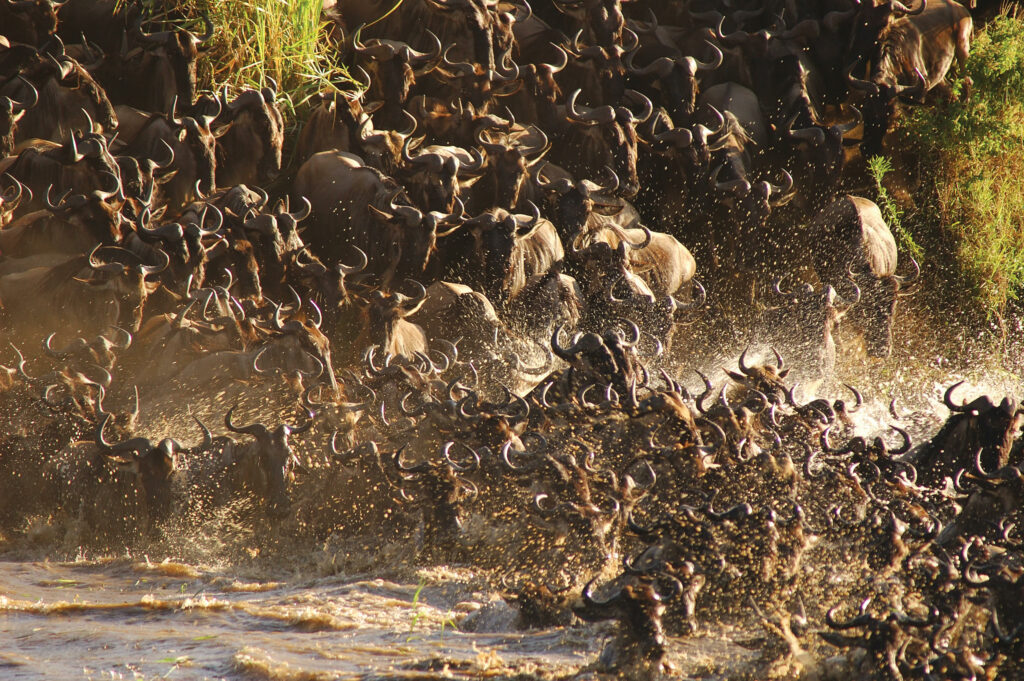
Serengeti’s ecosystem comprises 10,395 square miles and includes many other parks and protected areas, such as Ngorongoro, Masai Mara, Loliondo, Masawa, Grumeti and Ikorongo.
There are no fences or enclosures allowing the wild animals can move freely.
There are no fences or enclosures allowing the wild animals can move freely.
Serengeti National Park is the most famous national park in Africa. The park has a huge variety and an abundance of animals larger than any other park in Africa. With a couple of well-planned day, you will probably encounter representatives of almost all large and medium-sized animals in East Africa. Every day, exhibiting exceptional spectacle in exciting and unexpected encounters with wildlife.
Although much of the wildlife of the Serengeti are migratory, there are rich concentrations of animals throughout the year regardless of when you travel.
Serengeti includes a massive, pristine wilderness, and because of its size, the Serengeti retained a raw and wild feeling that many of the other parks in Africa lacks.
The park showcases plains of short grass, long grass savannahs, areas of rivers, open woodlands, thick buskvegetationer, wetlands, mountains and lakes. The south and east are the famous Serengeti Plain, where over two million animals collected during the rainy season.
The park’s central areas are renowned Serengeti lions and leopards till.i park is home to the famous Serengeti lion pride and resident leopards.
Unpredictability in such a large area filled with so many large carnivores and herbivores make a visit to this park for an unforgettable adventure.
Serengeti rests on a large plateau in the east has a height of about 2,000 meters above sea level and 1,000 meters in the west. The height means that the weather is generally pleasant and the temperature rarely exceeds 30 degrees Celsius. This is in sharp contrast to the many warm and moist areas in low-lying areas throughout Africaremaining concentration of plains animals in the world.
Ngorongoro Crater
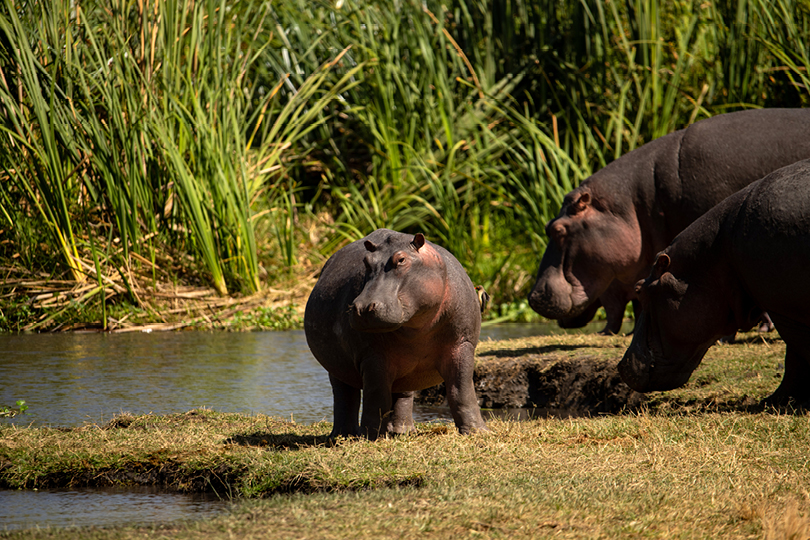
Ngorongoro Crater is a world heritage site, the world’s largest intact volcanic caldera and is called the 8th wonder of the world.
The 2,000-meter high walls and about 15 km wide crater create a natural amphitheater for the densest populations of large animals that can be found.
It is a microcosm of the larger Serengeti National Park and on one day it is possible to see a dizzying array of East African wildlife including the large predators.
The crater lives up to its reputation with a plentiful and accessible wildlife and offers opportunities to see lion, hyena and cheetah in action. The crater is really impressive and will surely be one of the highlights of your safari. The rim of the crater varies in height from more than 2000 m at the bottom to about 1700 meters. Ngorongoro crater rich soils and water supply all year provides an ideal habitat for a variety of animals. The crater is not a fully self-contained ecosystem as some animals wandering in and from the midst of the crater but it does not occur to any significant extent. Most of the animals in the crater of residence and remain there year round. There are approximately 20,000 large mammals within the crater walls.
Herbivores that you are likely to encounter include elephant, black rhino, hippo, buffalo, eland, zebra, wildebeest, hartebeest, waterbuck, warthog, Grant’s gazelle and Thomson’s gazelle.
The herbivores that you are likely to encounter include elephant, black rhino, hippo, buffalo, eland, zebra, wildebeest, hartebeest, waterbuck, warthog, Grant’s gazelle and Thomson’s gazelle. Giraffe, Impala and Topi is there but not on the crater floor, although they are common in the nearby Serengeti.
Predators that you are likely to encounter include lion, cheetah, hyena and jackal. Leopards, bats and foxes are also residents of the crater, but in smaller populations.
Elephants in Ngorongoro Crater is very impressive and will be the largest you will see during your safari program. All elephants are mainly old bulls with giant tusks. These elephants survived the great ivory hunt until it was banned in the 1980s. They found a relative safety in the crater. There are no breeding populations in the crater and no females in Ngorongoro. The best place to see these massive elephants is early morning in Lerai Forest.
Black Rhinos are highly endangered and almost extinct. Ngorongoro Crater is one of the last places in Tanzania where you can still reliably see wild black rhinos.
Ngorongoro Crater is one of the best places in all of Africa to see the large predators and it is an amazing natural sanctuary for a variety of animals that should not be missed. The park is among the very best Africa has to offer and is great to visit any time of year.
Lake Manyara National Park

Lake Manyara with an area of about 390 km2 filled largely by a shallow alkaline lake that is home to hippos, impalas, elephants, wildebeests, buffalo, warthogs and giraffes.
Giant fig trees and mahogany trees seen in connection with the life-giving lake that fills up with water continuously from the Crater Highlands directly above the Manyara.Landscape of Lake Manyara National Park is a mosaic of different plants and habitats that are host to an incredible array of wildlife. This intricate patchwork of complex ecosystem include water supply from rivers, acacia woods, the grassy floodplains and of course the lake itself.
It is commonly said that Lake Manyara is one of the best parks in Africa for birdwatchers. With over 300 species, including migratory birds, even the most seasoned bird enthusiast will not be disappointed.
Rift Valley escarpment forms a noteworthy landmark and provides a spectacular backdrop to Lake Manyara.
Great Rift Valley itself is a huge crack in the earth’s surface that shares the landscape along ensträcka on approximately 6,500 mil all the way from the Red Sea to the Zambezi River, it is one of the world’s few geological formations that can be seen from the moon. It is here, where cliffs towering some 700 meters above Lake Manyara, it is an amazing sight. Nestled at the base of the Great Rift Valley, the lake seems to look like a shimmering mirage in the distance. The mirror surface form shimmers with varied hues after the sky above – from dawn a shade of pink and then in sparkling blue.
The wooded slopes spread out like felt on the precipices and eventually opens up to the vast flood plains that surround the lake and blends into the endless plains beyond the lake which then disappears into the misty distance.
Manyara can lay claim to the largest concentration of elephants in East Africa, which makes it one of the best places to see elephants in the world.
The park is also famous for its tree climbing lions and the stösrat population of baboons who has ever been documented.
Overall, the Lake Manyara National Park is an exquisite gem. Small but beautiful, this park is a scenic retreat for the eyes and soul.
Tarangire National Park

The park covers approximately 2,600 square kilometers. It is named after the Tarangire River that flows through the park.
The park is most spectacular during the dry season that arises from January to March and July to October when the area attracts large quantities of animals since the Tarangire River that runs through the park, is the only permanent water source in the area.
Since migrating animals during rainy seasons.
The park has large quantities of elephants, kudu, baboons, zebras, waterbuck, giraffes, lions, cheetahs, leopards, hyenas, buffalos and a wide variety of antelopes and warthogs and wildebeests.
It also has a high incidence of the baobab tree. A tree can have an enormous circumference and has a tremendous ability to absorb water.
The park has over 550 bird species and is a mecca for birds lover. Like most of the national parks in the northern circuit, a variety of wildlife can be seen extending from the black rhino to Gerenuk and impalas. Tarangire National Park is probably one of the least visited of the northern Tanzanian game parks, and retains a real air of undiscovered Africa, particularly in the southern part of the park. It lies a little distance to the south-east Lake Manyara and covers an area of approximately 2,850 square kilometers.
It is named after the Tarangire River that flows through the park. The first migrating animals start arriving in the park in early June, and will remain in the park until November – just before the start of the short rainy season – when the migration heads north again.
This annual wildlife migration, Tarangire offers fantastic safari game viewing in the dry season.
Do not worry if you can coincide your trip with the annual migration period – many animals including African elephants, lions, cheetahs, leopards, hyenas, buffaloes, giraffes, zebras, a wide variety of antelopes and warthogs – stay in the park all year round .
The park offers many animals seen during the rainy season – you will however need to settle with lush vegetation, rainfall and the abundant insect population.
March to June is drier months of June to October the prime time to visit.During the dry season the river attracts large numbers of animals to be collected because the river is the only permanent water source in the area to be spread out during the rainy season.
Lake Eyasi
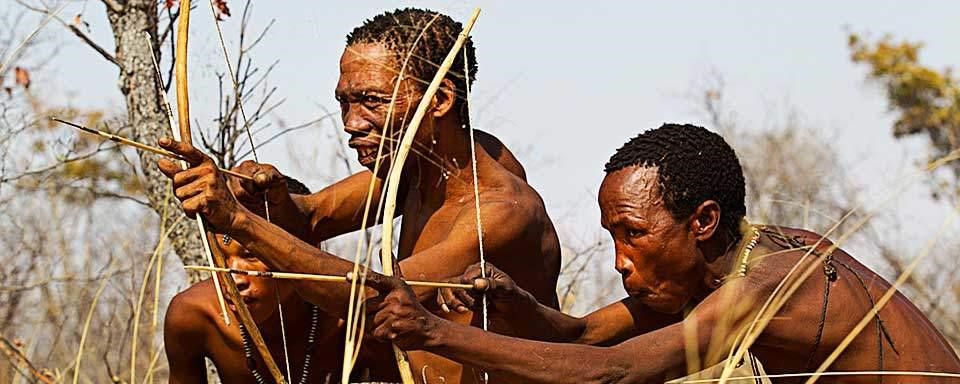
Lake Eyasi, just over an hour’s drive southwest of Karatu and Ngorongoro Conservation Area.
Lake Eyasi is a mildly alkaline lake about 50 km long.
About 100 years ago when the warlike Masai tribes invaded Ngorongoro and Serengeti, they drove Datoga tribes and other native bush people south. Many of these groups made themselves at home at Lake Eyasi. Along the shore of the lake is Acacia forest that is home to a large variety of wildlife including leopards and lions.
There are several good camping sites located in forest clearings by the lake. Lake Eyasi is a great place for bird watchers. Lake Eyasi is well known for its Hadzabe bushmen and it can sometimes be possible that you can follow them on a traditional hunt. Hadzabe is considered one of the last of the real hunters and gatherers. They use language to communicate at the click of the tongue. They live on by gathering berries and roots and hunt small game. Seeing them gives a fascinating insight into our förfädesr struggle for survival.
Lake Eyasi `s main water source is Sibiti River, which flows into the south end of the lake. Although the river supplies the lake with water all year round, it can even during dry seasons almost completely disappear. Because other tributaries were entirely absent during the drought. The lake is also a seasonal stop for large amounts of migrant flamingos.
Lake Natron
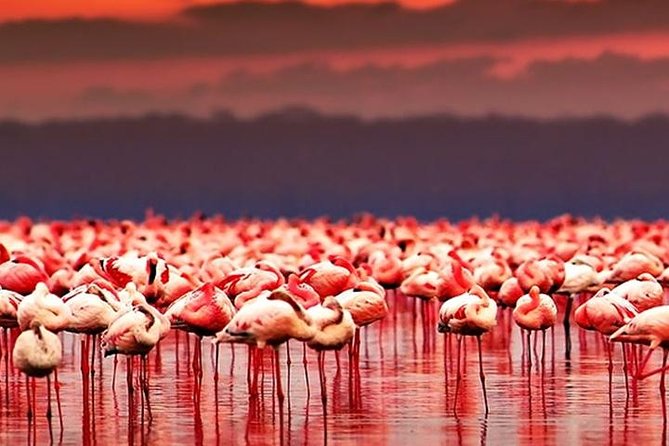
Lake Natron is a lake with high salinity located in northern Tanzania, near the Kenyan border.
Size: 260 km ² (172 sq miles). Location: Northern Tanzania, 300 km (190 miles) northwest of Arusha.
The lake is rather shallow, less than three meters and varies in width depending on its water level.
Lake Natron is a fascinating, almost surreal place. Because of the salt-loving microorganisms that live in the alkaline lake’s surface, the lake is often red or pink. The lake is the only breeding site for 2.5 million flamingos, as the corrosive environment is a barrier and protection from predators. When the water evaporates in the dry season the salinity increases to the point that salt-loving microoranismer start thriving.
These salt-loving organisms include some cyanobacteria – tiny bacteria that grow in the water. The red pigment in cyanobacteria produce the deep red and orange colors. As salinity increases, so does the number of cyanobacteria in the lake.
Arusha National Park
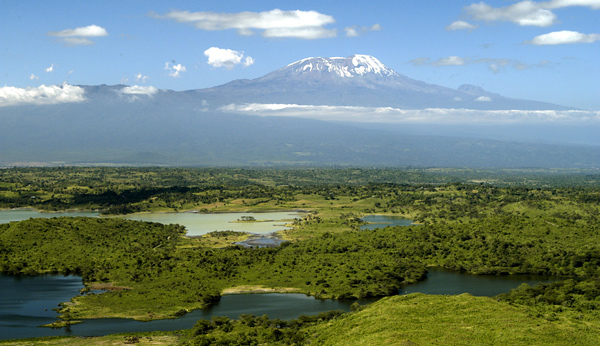
Arusha National Park consists of Momela lakes, Meru crater and the Ngurdoto crater.
On clear days magnificent views of Mount Kilimanjaro and Mont Meru can easily be seen.
The park is famous for its 400 species of birds, both migrant and resident, and the black and white colobus monkey. Other animals which can be found in the park are elephant, baboon, giraffe, hippo, leopard, hyena, buffalo, zebra, warthog, flamingos and a wide range of antelope species. Because of its close proximity to Arusha and its size, it is an ideal place for a day excursion.The Black and White Colobus is the mascot of the park. With the exception of lions and rhinoceros, all kind of wildlife and hundreds of different species of sedentary or migratory birds. Best time in the year to visit is april/may.
Kilimanjaro National Park
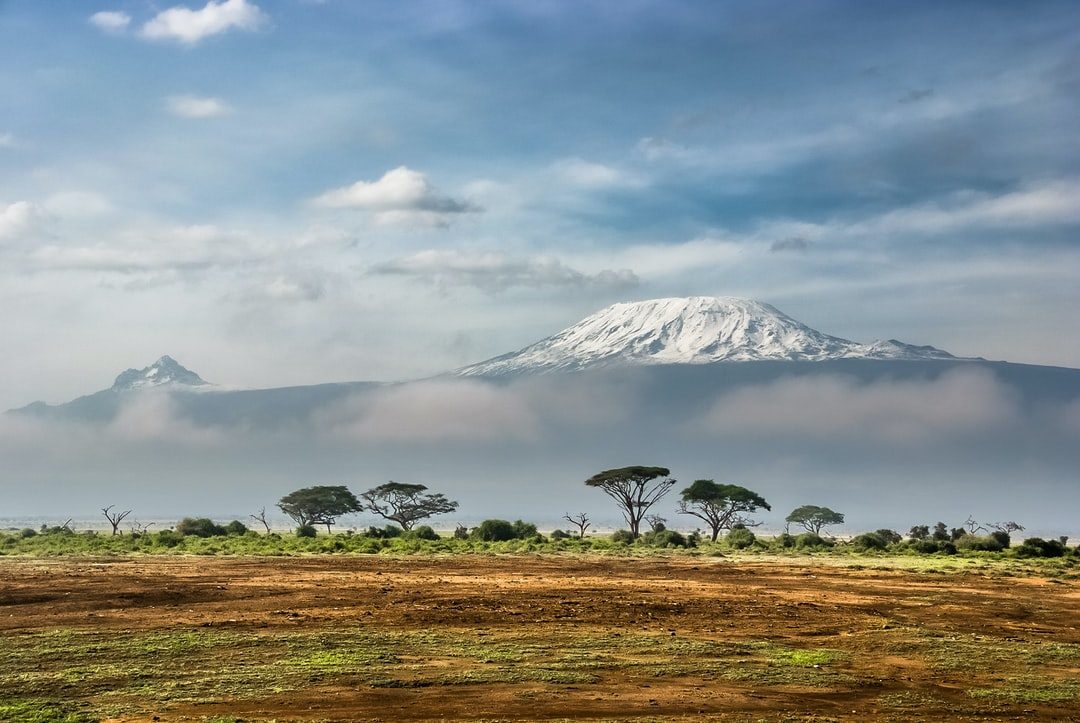
The highest mountain in Africa, snow caped and world’s highest free standing volcano.
It comprises of two dormant volcanoes (Kibo 5,895m a.m.s.l and Mawenzi 5,149m a.m.s.l) and one extinct volcano (Shira 3,962m a.m.s.l) respectively. The origin of the word is not well known but it said to be a combination of the Swahili word Kilima meaning “Mountain” and the KiChagga word Njaro, loosely translated as “Whiteness” giving the name “White Mountain”.
Its size is 1,712Km2 and was declared as a National Park in 1973, officially opened for tourism in 1977, declared a World Heritage Site by UNESCO in 1987 and Natural Wonder of Africa in 2013. Climbing to the top which is far up into the sky it’s a life time experience that no one can forget.
Climate:
There are two rainy seasons in a year. The wet season is from March to May during which it rains around the mountain base and snow accumulates on its peak.
The dry season is from late June through September during which the nights are cool and the days completely clear.
The park is located at an altitude between 1700 m to 5895 meter with annual average rainfall ranging from 828 mm at alpine desert to 2500 mm at Montane forest.
Getting there:
The park can be accessed by road or flight via Kilimanjaro International Airport – about 45km to the west. The Park Headquarters and one of the ascending gates are at Marangu, about 41Km from Moshi town and 86km from Kilimanjaro International Airport. The other seven gates of Rongai, Machame, Londorosi, Lemosho, Kilema, Mweka and Umbwe are located around the mountain base and can be reached by road.
